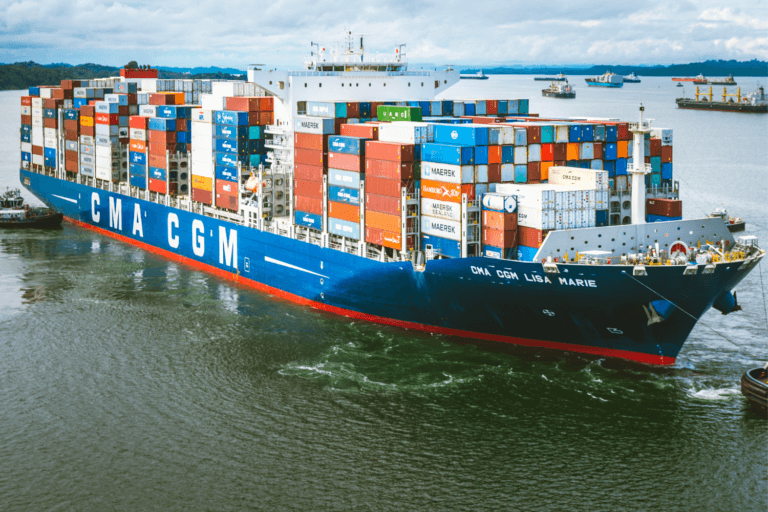The proliferation of occupational accidents on streets and highways, even resulting in death, requires that both companies and collaborators apply road safety actions to protect the life and health of those who must work daily behind the wheel, or continuously travel to and from their workplaces.
Road safety is a concept that all people must internalize and respect, not only when they carry out their work driving vehicles, rolling equipment or heavy machinery, but also in any situation that involves traveling, as a driver or pedestrian, on streets and highways.
The importance of this premise is confirmed in a study by the Chilean Security Mutual, where it is shown that the majority of workplace accidents, which involve road accidents resulting in serious injuries or death, occur more frequently outside the work environment, including logistics service routes and journeys to or from the workplace.
This scenario raises the urgent need to take preventive measures, not only by companies, but also by the workers themselves. In other words, a joint effort that requires the unrestricted commitment of all those involved, in order to minimize accidents and their consequences for people.
How can companies contribute to road safety?
For all companies or organizations, whether or not they belong to the transport and logistics segment, it is very important to always have adequate road safety planning. In fact, it is ideal that this strategies form an integral part of the entire Occupational Risk Prevention Plan.
This is equally important for workers who drive company vehicles, as well as for those who travel, in their own or company cars, to or from the workplace (to go home, perform specific tasks or attend a meeting, for example).
In the case of employees who perform specific professional tasks, such as driving buses, trucks and urban logistics vehicles, constant specialized training is also required.
However, this does not imply neglecting the other members of the organization, because, as we have seen before, everyone without exception can be part of road traffic accident at some point in their lives.
For this reason, the basic suggestion for those in charge of the Occupational Health and Safety department is to create and implement a Universal Mobility Plan that analyzes how workers move and determines the different variables that motivate and intervene in the design of these routes.
The consequent analysis will allow us the discovery risk factors or reckless behavior and, at the same time, determine what improvements could be implemented to correct said shortcomings, both in the field of knowledge and skills.
As an example, we can quote some measures such as:
- Consider the possibility of implementing flexible entry and exit times for the employees, to reduce the risk of accidents caused by the rush to arrive on time.
- Determine safer and less congested access and exit routes.
- Have alternative means to the private car, such as approach buses to strategic points of public transport.
In turn, at the level of professional drivers, transport and logistics companies can adopt safety practices such as:
- Verify that drivers of buses, trucks and logistics transport vehicles have their respective professional licenses up to date, and have a clean resume.
- Strictly penalize drivers who commit traffic violations while driving company vehicles.
- Periodically evaluate the driving skills and knowledge of the Traffic Law of the drivers, giving rewards to the best evaluated and sending the most deficient to training.
- Conduct constant training courses for all personnel in charge of company vehicles, both drivers and internal maintenance teams.
- Carry out periodic awareness campaigns, showing real cases of accidents with serious or fatal consequences, to instill safe behavior behind the wheel.
- Encourage good practices by rewarding those workers who contribute useful ideas aimed at reducing the number of road accidents, both inside and outside the company.
Safety recommendations are also important in everything related to the care and maintenance of company fleets, especially if they carry out logistics operations (cargo and/or passengers), which involve greater wear and tear on the different drive components.
In this sense, it is essential to have a fleet of vehicles in good condition, and that is also renewed periodically. Thus, the company will be able to have the best technology on the market, especially in the field of passive and active safety.
It is also essential to carry out periodic inspections and preventive maintenance, as well as to supervise that the workers make good use of the vehicles and do not contribute to their premature wear with poor driving practices.
Another important recommendation that should be emphasized to workers and executives is that the vehicle is not an office. Therefore “working” while driving is strictly prohibited. This means not making work calls, looking at reports or responding to messages related to work activities. When you are behind the wheel, your only occupation is driving and nothing else.
A point that we must especially emphasize, both to professional drivers and to the rest of the collaborators, because a large part of road accidents are caused by this type of distraction and recklessness.
Similarly, it is important to encourage rest, especially if there are professionals who spend more than 2 continuous hours behind the wheel (such as drivers of buses, trucks and intermodal logistics vehicles).
Although the legal norm in force in Chile establishes that “in no case can the worker drive more than five continuous hours, after which he must have a break whose minimum duration must be two hours”, it is recommended that all drivers stop to rest at least 15 minutes after every 2 hours of driving work.
A simple and especially useful recommendation for those who drive in cities or congested highways, and that the company itself should require of all its workers, as a basic road safety standard.
How can workers contribute?
The responsibility of ensuring an adequate Road Safety culture in the performance of work is also borne by the collaborators, both those who work professionally behind the wheel, and those who travel in vehicles to and from the company.
This implies, first of all, becoming actively involved with the initiatives implemented by those in charge of the Occupational Health and Safety department. In addition, it is necessary for workers to value this effort, participate in it and be proactive in suggesting improvements.
In this sense, employees can guide their commitment to road safety based on the following premises:
- Comply with the Occupational Risk Prevention and Mobility plans. We must have conscience that all these programs are the result of a detailed analysis of occupational traffic accidents that occur inside and outside the company. Therefore, if the measures indicated in them are followed, the possibility of suffering one of these road accidents will be significantly reduced.
- Respect traffic regulations when going to and from work. At this point it is important to be clear that it is better to arrive late than not to arrive because of an accident that can be avoided.
- Do not drive if you are very tired or if the working day has been intense. In these cases, physical and mental capacities will be diminished, which increases the possibility of having an accident.
- Choose the safest routes and highways. In this way, the trips will entail less risk of accident.
- Use the means of transportation offered by the company. Traveling by buses and other similar means will avoid unnecessary driving, especially after an intense and exhausting day.
- Keep vehicles in good condition. This involves correcting mechanical damage and performing the necessary maintenance on private cars. If it is a company vehicle, the worker must also ensure that it is in the best conditions. And if he detects any mechanical failure, he must report it immediately to his supervisors, to avoid unnecessary risks.
- Avoid distractions behind the wheel. This means not using the mobile phone to make calls, send text messages or check email. As we saw earlier, the vehicle is not a second office.
- Get enough rest and be careful behind the wheel. This is especially important for personnel who spend long continuous hours in professional driving tasks on streets or highways.
The value of digital contribution
Recent experience has also shown that digital technology and the use of state-of-the-art technological tools provide significant help in preventing road accidents.
For example, multidisciplinary professional teams can use specialized solutions in road safety auditing that will allow them to recognize and detail the possible safety problems that are generated in existing roads, or in those that are going to be built.
In this way, they can offer the authorities or companies in charge of the works, the necessary recommendations to reduce the number of accidents and, consequently, the number of injured people.
At DataScope we have an advanced road safety audit form, which will allow you to carry out a complete process of identifying road and intersection problems.
Road safety audit professionals can use this customizable template to take photos and helpful notes about the various safety concerns that may be found around an office, business, or construction site, among many other possible work scenarios.
Create an account DataScope and start now!
DataScope is the ideal tool to eliminate paper use, save time, and efficiently collect data from the field. It allows companies to streamline, organize and evaluate field work thanks to its online forms, which provide indicators in real time, 100% adaptable to any area.
With DataScope, your team can answer custom mobile forms from their phones or tablets, online or offline, through the app.







